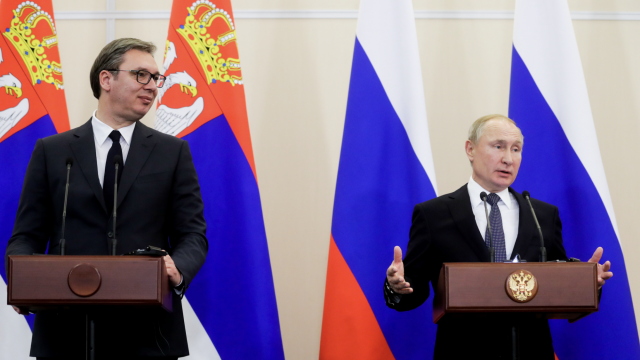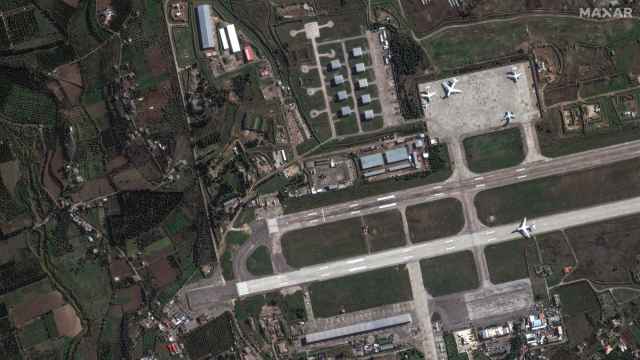The Central Bank, holder of the world's third-largest reserves, said Monday that it had increased the share of sovereign bonds in its investments in 2009, opting to reduce its risks and accept lower returns.
By the end of 2009, 46.4 percent of the Central Bank's foreign currency reserves were held in dollar assets, 42.3 percent in euros, 10.1 percent in British pounds and 1.2 percent in Japanese yen, the monetary authority said in a report published on its web site.
Officials have said the nominal structure of the foreign currency portion of Russia's reserves remains unchanged at 47 percent U.S. dollars, 41 percent euros and 10 percent pounds — the same as it was a year ago.
Reserves can deviate slightly from that structure on any particular day.
"During the period, the Bank of Russia made conversion operations on the global currency market with the U.S. dollar, the euro, the British pound and the Japanese yen," the Central Bank said.
"Due to the significant volume of operations with the U.S. dollar on the domestic market and the changes in the size and structure of Bank of Russia's obligations in foreign currencies, the main volume of transactions was the purchase and sale of other foreign currencies versus the U.S. dollar in order to bring their share in the net foreign currency assets in line with the nominal indicators," the bank said.
Russia confirmed that it had added the Canadian dollar to the list of reserve currencies from 2010, but gave no details.
The Central Bank, which also has the right to invest in Swiss franc assets but does not currently hold any, has previously said the share of the Canadian dollar in its reserves would be smaller than that of the yen.
"The volume of the Canadian sovereign bond market is relatively small compared with the biggest markets — Japan, the United States, the euro zone and the United Kingdom," the Central Bank said, but added that the market was well developed.
On a country basis, 39 percent of reserves were invested in the United States as of the end of 2009, 18 percent in Germany, 16 percent in France, 9 percent in Britain and 2 percent in Russia.
Nearly 90 percent of the $416.9 billion of assets were in sovereign bonds, 1.7 percent was in other bonds, 7.1 percent in deposits and accounts, and 1.3 percent in repo operations.
"To minimize the possible negative impact from the instability on external markets … during 2009, the Bank of Russia reduced the volume of deposits held at foreign commercial banks and investments into nonsovereign bonds of foreign issuers," the Central Bank said. It gave no comparative data.
"Investment into foreign sovereign debt was, on the other hand, significantly increased. Deposits placed with central banks and the Bank of International Settlements also increased."
The Central Bank earned $6.3 billion on its investments in 2009.
"Investing in instruments of high credit quality partly determines the fairly low yield of the investments," it said.
A Message from The Moscow Times:
Dear readers,
We are facing unprecedented challenges. Russia's Prosecutor General's Office has designated The Moscow Times as an "undesirable" organization, criminalizing our work and putting our staff at risk of prosecution. This follows our earlier unjust labeling as a "foreign agent."
These actions are direct attempts to silence independent journalism in Russia. The authorities claim our work "discredits the decisions of the Russian leadership." We see things differently: we strive to provide accurate, unbiased reporting on Russia.
We, the journalists of The Moscow Times, refuse to be silenced. But to continue our work, we need your help.
Your support, no matter how small, makes a world of difference. If you can, please support us monthly starting from just $2. It's quick to set up, and every contribution makes a significant impact.
By supporting The Moscow Times, you're defending open, independent journalism in the face of repression. Thank you for standing with us.
Remind me later.





